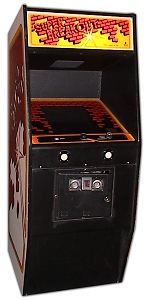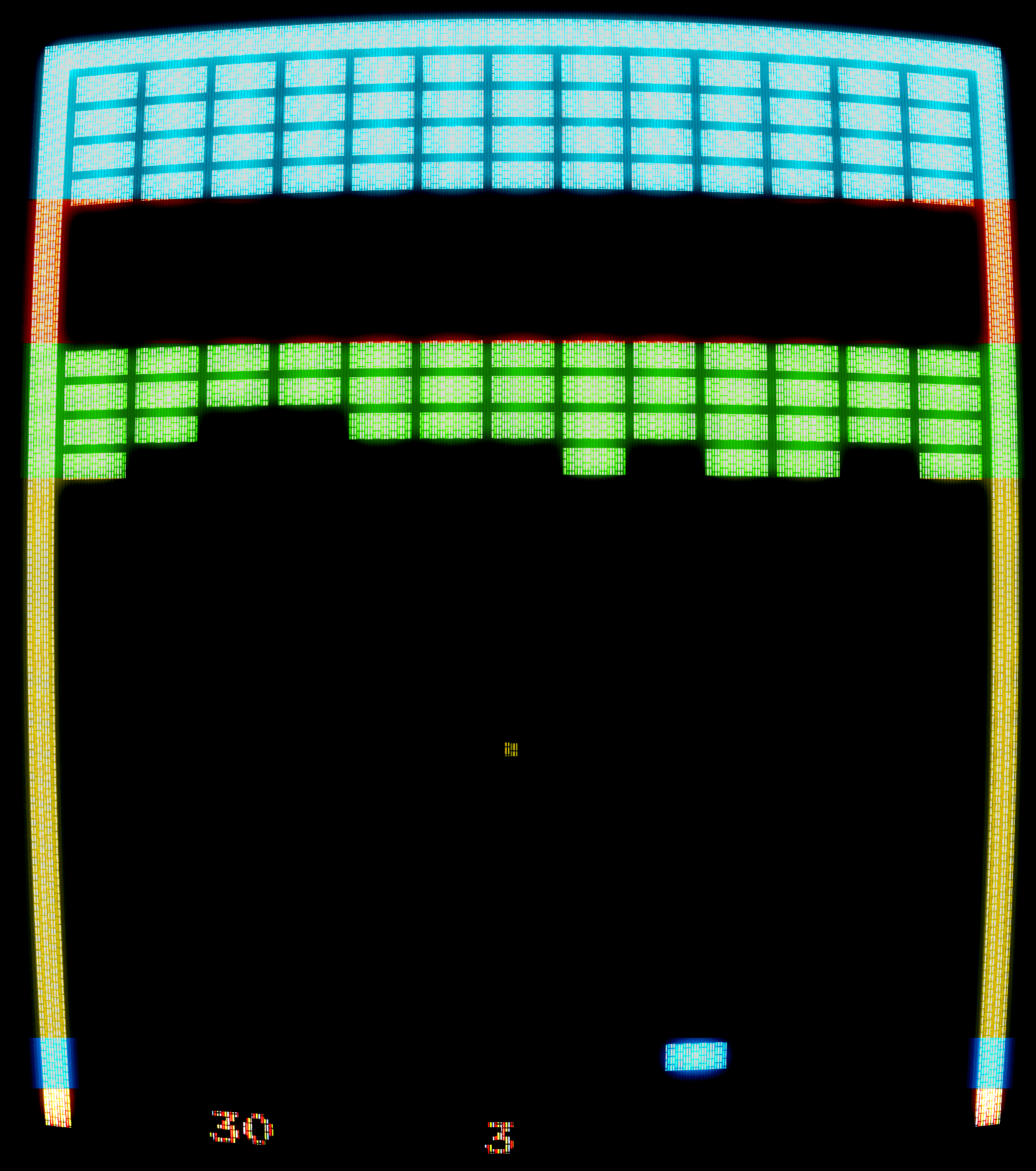
 The Game: You’ve got a mobile paddle and – well, frankly, balls. But you don’t have a lot of balls at your disposal (am I the only one becoming a little bit uncomfortable discussing this?), so you have to make the best use of them that you can to knock down the rows of colorful bricks overhead. In some games, there may be other, free-floating balls trapped in “cavities” in the bricks, and setting them loose will mean you’ll have several balls – and not all of them necessarily yours, disturbingly enough – to handle. Missing one of your balls – and we all know how painful that can be – forces you to call another ball into play. Losing all of your balls, as you’ve probably guessed by now, ends the game. So, in essence, Super Breakout is a metaphor for life from the masculine perspective. (Atari, 1978)
The Game: You’ve got a mobile paddle and – well, frankly, balls. But you don’t have a lot of balls at your disposal (am I the only one becoming a little bit uncomfortable discussing this?), so you have to make the best use of them that you can to knock down the rows of colorful bricks overhead. In some games, there may be other, free-floating balls trapped in “cavities” in the bricks, and setting them loose will mean you’ll have several balls – and not all of them necessarily yours, disturbingly enough – to handle. Missing one of your balls – and we all know how painful that can be – forces you to call another ball into play. Losing all of your balls, as you’ve probably guessed by now, ends the game. So, in essence, Super Breakout is a metaphor for life from the masculine perspective. (Atari, 1978)
Memories: The sequel to Atari’s original Breakout coin-op, which actually enjoyed greater success at home on the Atari VCS than in the arcades, Super Breakout added some minor innovations to the original game, including the cavities (and their rogue balls) and the double-paddle (and the paddle length shortening by half when you knock a ball into the top of the playing field). Still fundamentally a black & white game, Super Breakout’s colorful bricks were achieved the old Magnavox Odyssey way: colored overlays on the screen itself.
 A little note about the original Breakout – that game was designed by Nolan Bushnell, but he had an early Atari employee named Steve Jobs implement the actual code. Jobs brought in a friend of his, one Steve Wozniak, to do most of the work, but of the $7,000 Bushnell paid him to “program” Breakout, Jobs only shared $350 with Wozniak. This apparently didn’t deter them from later forming Apple Computer together, though.
A little note about the original Breakout – that game was designed by Nolan Bushnell, but he had an early Atari employee named Steve Jobs implement the actual code. Jobs brought in a friend of his, one Steve Wozniak, to do most of the work, but of the $7,000 Bushnell paid him to “program” Breakout, Jobs only shared $350 with Wozniak. This apparently didn’t deter them from later forming Apple Computer together, though.
Also later adapted for both the VCS and Atari’s 5200 console, Super Breakout continues to live on through excellent (and addictive) adaptations on just about every platform under the sun – talk about a breakthrough hit.
 The Breakout games were also revived in the form of one of Hasbro Interactive’s last retro revivals before being sold to Infogrames, Breakout: The Great Escape, which combined elements of both Breakout and Super Breakout with modern-day 3-D game play elements.
The Breakout games were also revived in the form of one of Hasbro Interactive’s last retro revivals before being sold to Infogrames, Breakout: The Great Escape, which combined elements of both Breakout and Super Breakout with modern-day 3-D game play elements.


